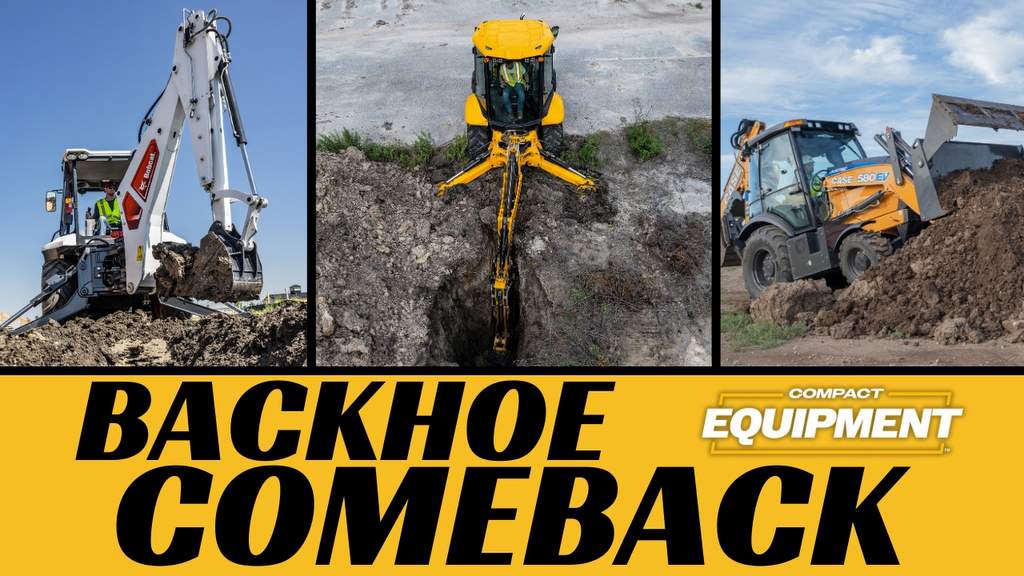Backhoe Loader Maintenance Musts
Backhoe loaders are one of the most popular types of compact equipment around. In 2014, around 15,000 backhoes were sold in North America, and the backhoe market has grown by around 8 percent each of the past two years. Globally the backhoe remains one of the most popular forms of construction equipment, with around 73,000 backhoes sold last year. These versatile, dig-and-load machines are useful in an incredibly wide variety of tasks, including utility construction and maintenance, residential and commercial construction, landscaping, snow removal and road work, just to name a few. This versatility means backhoes put in long hours in the field, often working in extreme conditions, putting their durability to the test.
Operational and Maintenance Tips
Anyone who’s looked into purchasing heavy equipment lately knows that a new, high-quality machine is a major investment. As a result, most businesses and municipalities need to choose their machines carefully and then operate and maintain them with care. The first step to getting a good return on investment is minimizing machine downtime. Perform a daily walk-around to check for potential issues and become familiar with the recommended maintenance schedules on all machine systems and components to avoid possible failure.
“Obviously, close attention to regular maintenance is very important for extending backhoe life,” says Christopher Burton, product sales manager for JCB North America. “To ensure optimum uptime, it’s particularly important to use clean fuel, lubricate high-use areas on a daily basis, use clean oils and adhere to the manufacturer’s recommended daily checks and service schedules.”
A lot of problems can be caught or prevented if operators simply take 15 minutes before start-up each day to check the fluids and general condition of the machine. This includes inspecting for loose or missing nuts and bolts, as well as greasing all lube points. Specifically, it is important to check the hydraulic fluid, engine oil, antifreeze and fuel and to refill fluids if necessary. The next step is to walk around the machine, checking for any leaks or damage from previous use. This visual inspection should include checking common wear points, such as hydraulic hoses, tires, bearing bushings and pins/bolts and making sure all the machine’s systems are lubricated and functioning properly.

Backhoes are joint-intensive machines with numerous pivot points. Regular greasing of pins and bushings is the first step to ensuring longevity.
If there is a tire problem, you may feel that the machine is not tracking correctly or has a rhythmic bump when driving. The fix is to replace the tire. When replacing a tire, be sure to check the rolling radius — tires must be matched side-to-side or you will cause issues with the loader’s drivetrain.
Backhoes are joint-intensive machines with numerous pivot points. Regular greasing of pins and bushings ensures the longevity of these high-load-bearing components, eliminating unnecessary wear-and-tear. In fact, some pins and bushings require daily greasing.
“Also, keep in mind that you need to use the right grease,” Burton adds. “You should use grease that’s of the proper quality and specification for ultimate performance. It’s also important to make sure you’re using grease that’s right for your particular application and regional temperature variances. Your dealer can assist with this.”
Checking for damaged hoses is also a good idea, as hose ruptures are one of the most common causes of machine downtime. On some machines, hoses are strung up on the boom, which can cause them to catch on any obstructions when the hoe is working inside or near a trench. Burton says that a straight-boom, open-box design allows cylinders, hoses and valves to be located inside the box, which protects them from potentially damaging external forces.
Needless to say, cold weather can be extremely tough on heavy equipment. Store a backhoe indoors overnight during the winter months when possible, using engine block heaters and the proper antifreeze.
Weekly Tips
Weekly maintenance checks are the ideal time to make sure all ground-engaging points, such as the extend-a-hoe, bucket leveling and return-to-dig, are properly adjusted and in good working order. On the extendable dipper stick, you need to check the bushings and pins to make sure they are not showing excessive wear. And on the backhoe, make sure the components on the center mount are not loose or worn out. Regular engine maintenance is also very important. Air filters should be inspected daily and changed weekly if the backhoe loader is working in extreme environments.
Another key point of engine maintenance is the fuel system. As engines have become more advanced, the fuel systems have become less tolerant of water or other contaminants. If the fuel system does get contaminated, operators will need to drain the fuel tank, clean fuel lines and then put new fuel in the machine. To prevent contamination in your fuel system, always make sure the top and opening to the tank are clean before removing the cap, fill up the tank and securely fasten the cap each night to keep condensation from forming.
New Options and Technology
Today’s telematics technology is playing a significant role in helping heavy equipment last longer. These systems capture detailed machine performance information and make it accessible to machine owners via their web-enabled mobile devices or computers, either in real time or via periodic summary reports. Customers can also monitor a machine’s location, operating hours and efficiency, which simplifies routine maintenance scheduling.
“Telematics has become an important operational and maintenance tool because it alerts customers to scheduled maintenance requirements, meaning that machines are always kept in the best condition for maximum productivity,” Burton says.
Lynette Von Minden is senior public relations counsel for Swanson Russell.





I did not know before that you need to check the levels of hydraulic fluid so regularly. My wife and I are thinking of purchasing a backhoe to use for several projects that we are planning on. If we do purchase one, I will make sure that the levels of hydraulic fluid and such will get checked regularly so we can avoid any negative consequences of doing the contrary.